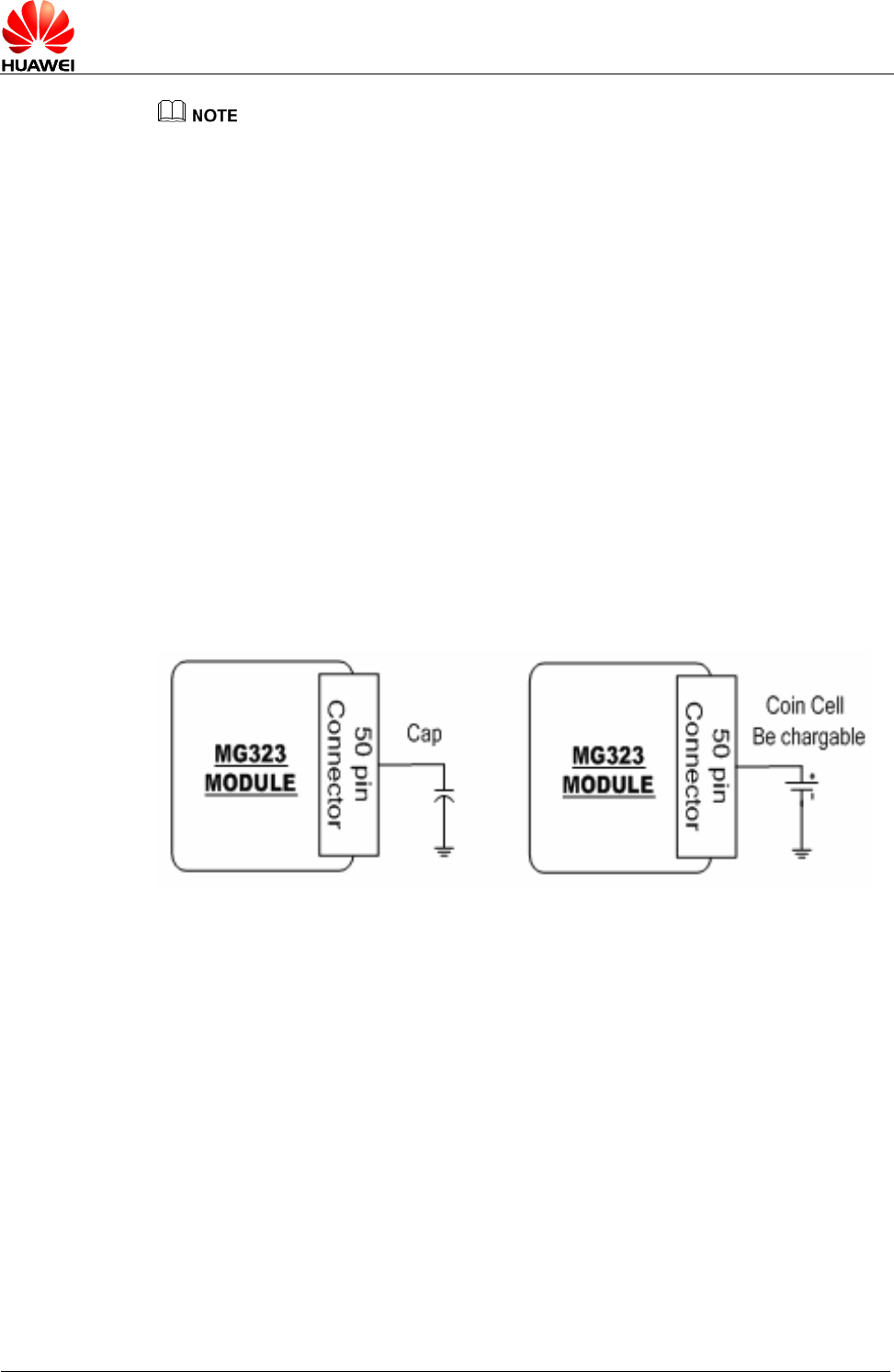
HUAWEI MG323 GSM M2M Module
Hardware Guide
Description of the Application Interfaces
Issue 04 (2011-08-22)
Huawei Proprietary and Confidential
Copyright © Huawei Technologies Co., Ltd.
14
For detailed information about power supply design and printed circuit board (PCB) design,
see HUAWEI MI Module Power Management Design Guide, HUAWEI M2M Module Power
Management Design Guide and HUAWEI LGA Module PCB Routing Design Guide.
3.3.3 VCOIN Interface
VCOIN is an interface for standby power input of the RTC in the MG323 module. If
the VBAT interface is ready for power supply, it on priority supplies the RTC with
power. If the VBAT interface is not ready, the VCOIN interface provides standby
power input for the RTC. In this case, the MG323 module needs 5 µA to maintain the
RTC function.
You can use an external battery to supply power through the VCOIN interface. The
recommended voltage is 3 V. You can also use an external capacitor if you do not
use a battery. The capacitance determines the duration of the RTC when the VBAT
interface is not ready.
The MG323 module supports charging external standby batteries. When the VBAT
voltage is 3.8 V, the charging current is about 0.6 mA (typical value). Figure 3-2
shows two types of circuits for your reference.
Figure 3-2 VCOIN interface circuit
3.3.4 VIO Interface
Through the VIO interface, the MG323 module can supply 2.8 V power externally
with an output current of 10 mA (typical value) for external level conversion or other
applications.
If the MG323 module is in Sleep mode, the VIO interface is in the low power
consumption state (< 500 µA). If the MG323 module is in Power Down mode, the VIO
is in the disabled state. If VIO pin is not in use, disconnect the pin and make sure it is
not grounded.


















